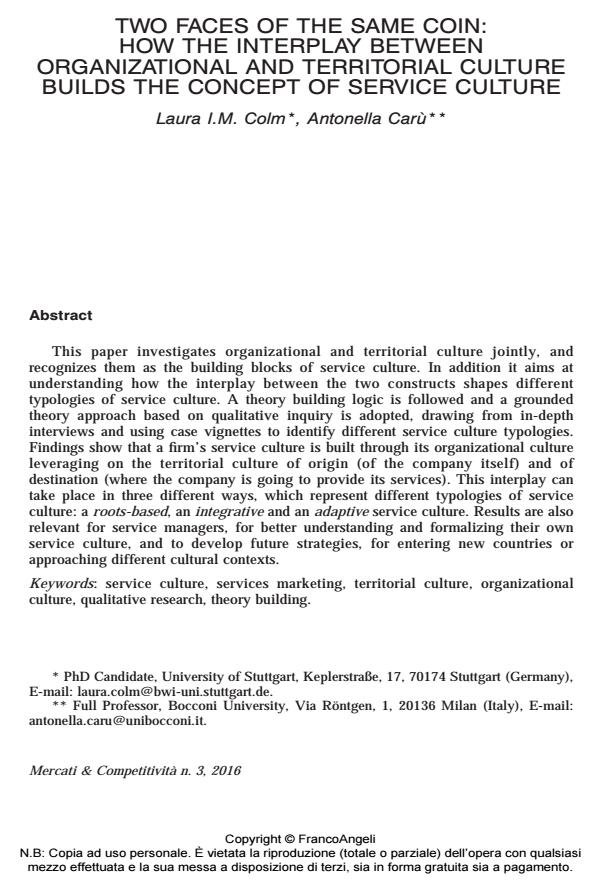Two faces of the same coin: how the interplay between organizational and territorial culture builds the concept of service culture
Titolo Rivista MERCATI & COMPETITIVITÀ
Autori/Curatori Laura I.M. Colm, Antonella Carù
Anno di pubblicazione 2016 Fascicolo 2016/3
Lingua Inglese Numero pagine 23 P. 87-109 Dimensione file 492 KB
DOI 10.3280/MC2016-003006
Il DOI è il codice a barre della proprietà intellettuale: per saperne di più
clicca qui
Qui sotto puoi vedere in anteprima la prima pagina di questo articolo.
Se questo articolo ti interessa, lo puoi acquistare (e scaricare in formato pdf) seguendo le facili indicazioni per acquistare il download credit. Acquista Download Credits per scaricare questo Articolo in formato PDF

FrancoAngeli è membro della Publishers International Linking Association, Inc (PILA)associazione indipendente e non profit per facilitare (attraverso i servizi tecnologici implementati da CrossRef.org) l’accesso degli studiosi ai contenuti digitali nelle pubblicazioni professionali e scientifiche
This paper investigates organizational and territorial culture jointly, and recognizes them as the building blocks of service culture. In addition it aims at understanding how the interplay between the two constructs shapes different typologies of service culture. A theory building logic is followed and a grounded theory approach based on qualitative inquiry is adopted, drawing from in-depth interviews and using case vignettes to identify different service culture typologies. Findings show that a firm’s service culture is built through its organizational culture leveraging on the territorial culture of origin (of the company itself) and of destination (where the company is going to provide its services). This interplay can take place in three different ways, which represent different typologies of service culture: a roots-based, an integrative and an adaptive service culture. Results are also relevant for service managers, for better understanding and formalizing their own service culture, and to develop future strategies, for entering new countries or approaching different cultural contexts.
Parole chiave:Service culture, services marketing, territorial culture, organizational culture, qualitative research, theory building
Laura I.M. Colm, Antonella Carù, Two faces of the same coin: how the interplay between organizational and territorial culture builds the concept of service culture in "MERCATI & COMPETITIVITÀ" 3/2016, pp 87-109, DOI: 10.3280/MC2016-003006